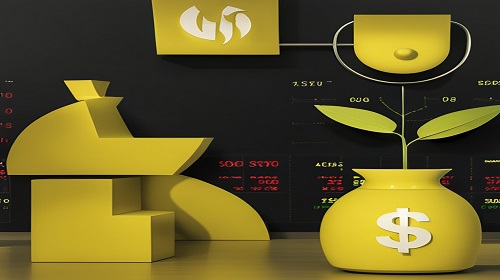Automated Trading: Revolutionizing the Financial Markets
January, 30th 2024
The realm of financial trading has been undergoing a seismic shift thanks to one key innovation: automated trading. As this technology becomes increasingly integrated into market strategies, investors and fintech enthusiasts are keen to understand how it might alter the landscape of buying and selling assets.
Introduction
Automated trading, often termed as algorithmic trading, is the use of computer programs to enter trading orders based on specific algorithms. These algorithms take into account variables like price, timing, quantity, or any mathematical model that can be quantified. Its role is now so prominent that it accounts for a considerable percentage of trades on major financial markets.
Benefits of Automated Trading
Automated trading systems bring numerous advantages to the trading table – quite literally changing how it’s set. Here’s what they bring to market participants:
· Increased efficiency and speed: Automated systems can process vast amounts of data and execute trades at speeds unattainable by humans.
· Elimination of human error: Emotional trading and other human errors are minimized as automated systems adhere strictly to the set parameters.
· Real-time data and analysis: Trading algorithms can analyze market conditions in real time, ensuring trades are based on the latest information.
· Diversification and risk management: Automated strategies can spread investments across various instruments to manage risks effectively.
Types of Automated Trading Strategies
Various automated trading strategies exist, each tailored to different market conditions and trading objectives:
· Trend-following strategies capitalize on market movements by identifying and following trends.
· Mean-reversion strategies assume that markets will revert to historical averages after extreme movements.
· Breakout strategies focus on entering a position during periods of increased volatility when a price moves outside a defined range.
· Arbitrage strategies exploit price differentials between markets or securities for profit.
Key Components of Automated Trading Systems
For an automated trading system to be effective, several critical components need to sync perfectly:
· Algorithm development and testing: This is the foundation, ensuring that strategies are robust and reliable before live execution.
· Data feeds and execution platforms: A steady stream of market data is essential, as is a reliable platform to execute trades.
· Risk management and position sizing: Protecting capital is paramount, and automated systems can be programmed to adhere to risk thresholds.
· Monitoring and maintenance: Continuous oversight is necessary to ensure systems are running as intended and to make adjustments as market conditions change.
Challenges and Risks
Yet, like any technological innovation, automated trading is not without its trials and tribulations:
· Technical challenges: A complex amalgamation of algorithms and technology means a high probability of technical hiccups.
· System failures and glitches: Reliance on computer networks leaves room for disruptions due to technical failures.
· Regulatory and ethical considerations: The lack of human oversight can raise questions about the fairness and legality of automated strategies.
· Over-reliance on automation: A tool is only as effective as the hand that wields it; over-dependence on automation can lead to complacency and vulnerabilities.
The Future of Automated Trading
With fintech continuing to evolve, algorithmic trading is tipping towards more advanced realms, as Dr. Ray Johnson notes: “The precision and speed of algorithmic trading can outpace human capabilities, offering a competitive edge in fast-moving markets.”
· AI and machine learning: These technologies promise to create self-learning algorithms that can adapt strategies in real time.
· Blockchain integration: This could further enhance security and transparency in automated trading.
· Impact on job roles: As machines take on more responsibilities, professionals in the financial industry may see shifts in their roles and required expertise.
Michael Lee advises, “Embracing fintech innovations, particularly in automated trading, is imperative for traders who want to stay ahead in a data-driven future.”
Conclusion
Automated trading has etched a perpetual mark on the financial markets. The sleek efficiency and computational prowess it offers makes it an invaluable asset for any trader’s arsenal. Yet, with great technological power come new challenges and responsibilities.
As we wrap up our tour of this cutting-edge financial tool, remember that the future belongs to those who adapt – and adaptation is critical when it comes to technology in finance.
Craving more knowledge about fintech trends that are shaping the market? Subscribe to our newsletter and never miss an insight that could give you the edge in this rapidly evolving industry.
Copyright ©2025 Refonte Infini-Infiniment Grand
Refonte Infini Support
Log in to save important details in your chat history. This will help us serve you better and enhance your chat experience.
You might be looking for